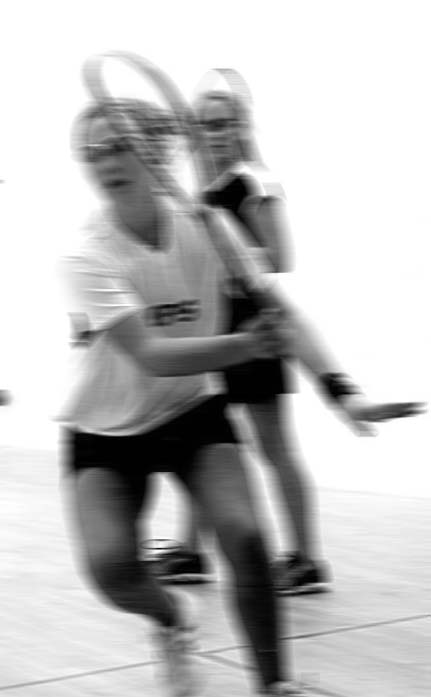 Racquetball has been my exercise passion ever since I took it up in my early twenties on concrete three-wall courts on the University of Florida campus. Recently I was watching some newbie players in action and I was struck by their failure to re-position themselves after every shot.
Racquetball has been my exercise passion ever since I took it up in my early twenties on concrete three-wall courts on the University of Florida campus. Recently I was watching some newbie players in action and I was struck by their failure to re-position themselves after every shot.
Like life, there are many “secrets” to racquetball success. Aerobic endurance, arm strength, quickness on your feet, hand and eye coordination, a good wrist flick, strong shot selection, the ability to think and react in three full dimensions when playing indoors, the ability to hit the ball hard AND low, a good passing shot, a hard drive serve, a decent lob serve/return, a zippy Z-shot, the willingness to practice, practice, practice…. The list goes on.
One of the simplest keys to win at racquetball is to properly position yourself for the next shot after each shot. While the perfect location is always impacted by an intuitive understanding of where the ball is going to be based upon your shot and the probable return shot, in general you should always move back to the center of the court from the side walls and about two-thirds to three-quarters of the way back from the front wall. This is the general rule. Safety always comes first and after that comes giving the other player a fair chance to hit the ball——no avoidable hinders. In truth, a well-played racquetball game is a beautiful ballet, choreographed on the fly.
y moving to the center you are in position to best react to wherever your opponent places the ball. When the ball comes into “your court,” you are ready.
Moving toward the center may sound simple but it is not necessarily intuitive or even easy. It takes energy and there is always the temptation to “play the spectator,” to stand and watch the outcome before you move. Forcing yourself to react before you have to, especially when you are tired or winded, takes discipline. Only the truly committed, only the deeply motivated, chose to be proactive, to move back to the center, to pre-position themselves to be in the best position for whatever may happen. It takes effort, energy, and discipline but it also puts you a step ahead.
As I watched the game unfold, it occurred to me that the principle and benefits of properly pre-positioning yourself apply as much, if not more, to life as to racquetball. Those who plan ahead, those who prepare, those who are always thinking one or more steps ahead, they are the ones who achieve, who perform and live at higher levels. Some may call it luck, some may call in a gift. I call it intelligent effort.
Closing Quotes:
“A good plan today is better than a perfect plan tomorrow.” — Proverb
“It pays to plan ahead. It wasn’t raining when Noah built the ark.” — Proverb
“Planning is bringing the future into the present so that you can do something about it now.”
— Alan Lakein, author of “How to Get Control of Your Time and Your Life” (1973) and “Give Me a Moment and I’ll Change Your Life: Tools for Moment Management.” Former President Bill Clinton started his 2004 autobiography, “My Life,” with a reference to a Lakein book: “When I was a young man just out of law school and eager to get on with my life, on a whim I briefly put aside my reading preference for fiction and history and bought one of those how-to books: ‘How to Get Control of Your Time and Your Life,’ by Alan Lakein. The book’s main point was the necessity of listing short-, medium-, and long-term life goals, then categorizing them in order of their importance, with the A group being the most important, the B group next, and the C the last, then listing under each goal specific activities designed to achieve them. I still have that paperback book, now almost thirty years old. And I’m sure I have that old list somewhere buried in my papers, though I can’t find it. However, I do remember the A list. I wanted to be a good man, have a good marriage and children, have good friends, make a successful political life, and write a great book.”


0 Comments